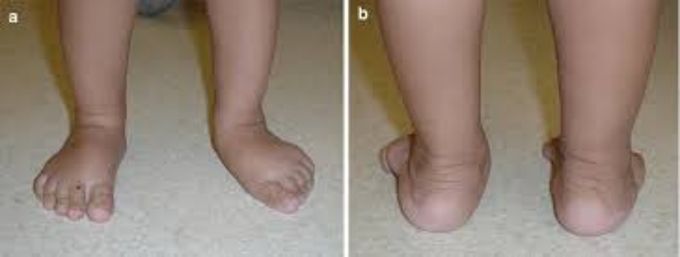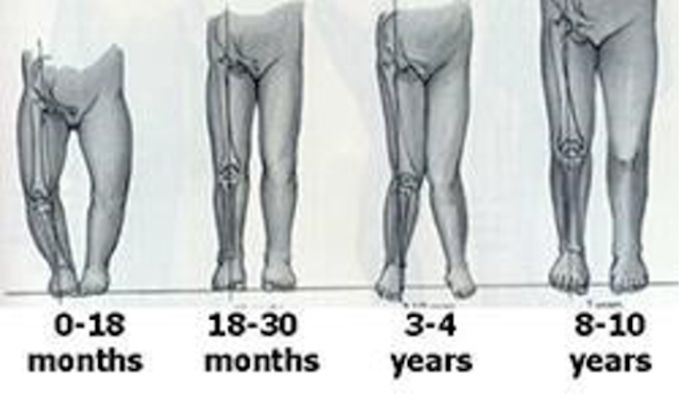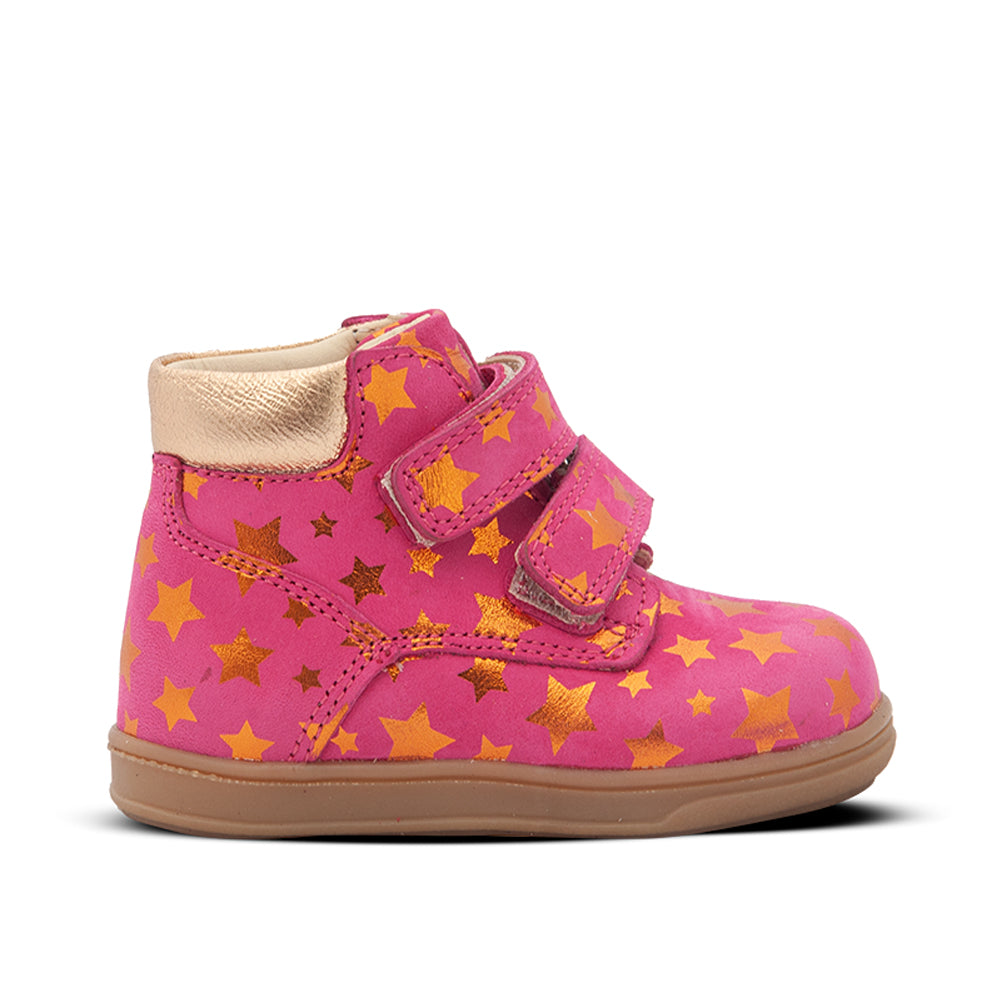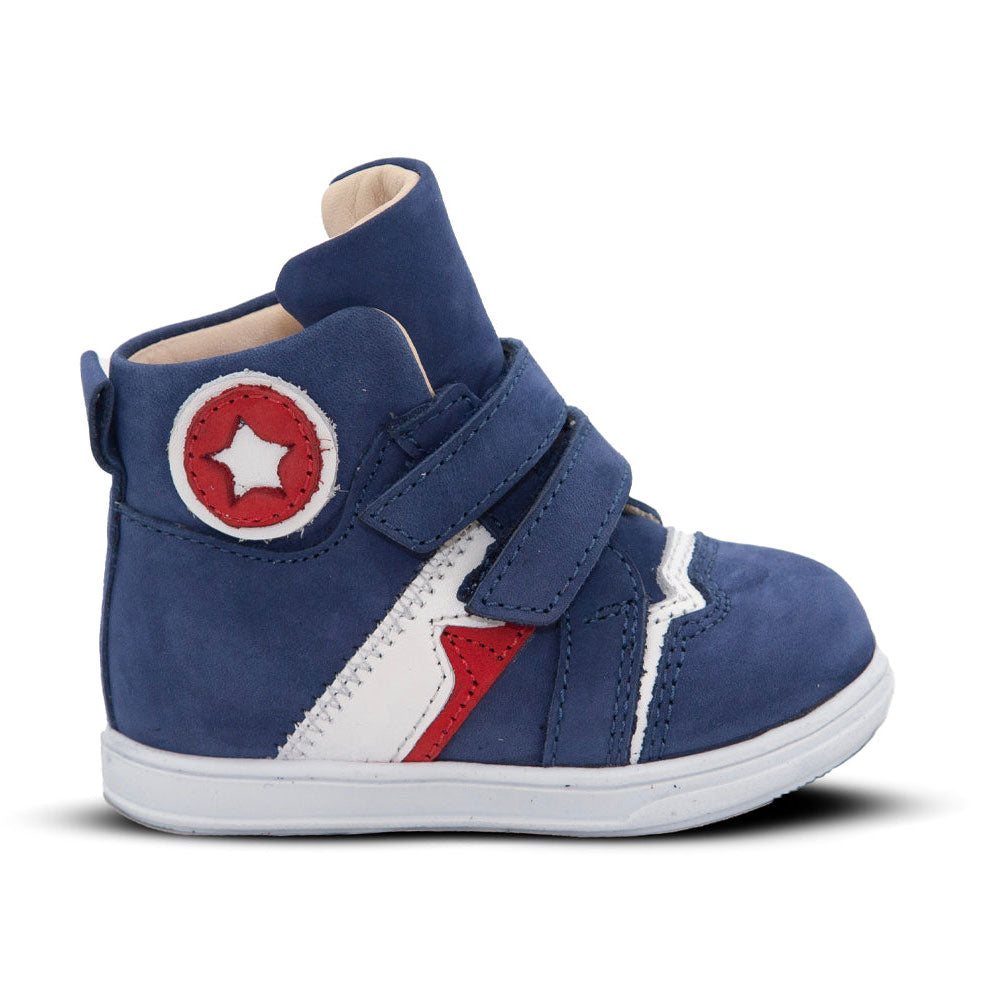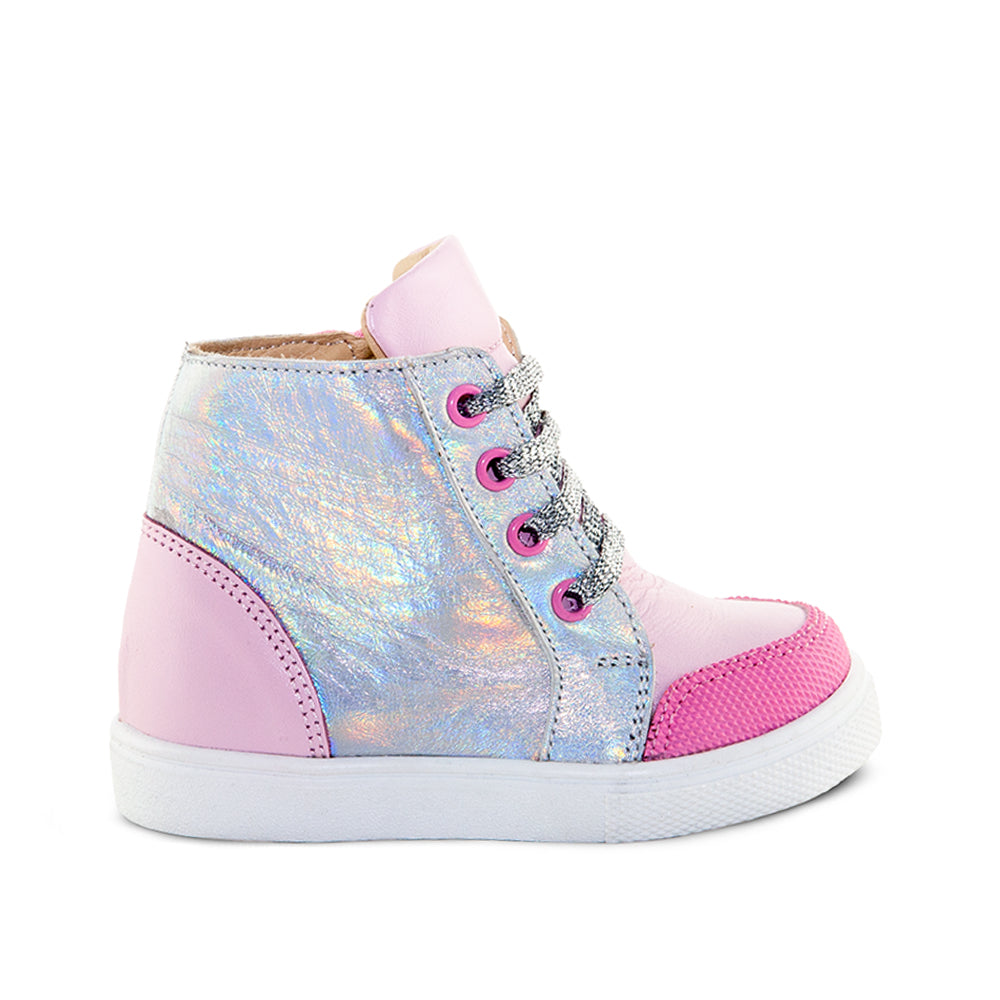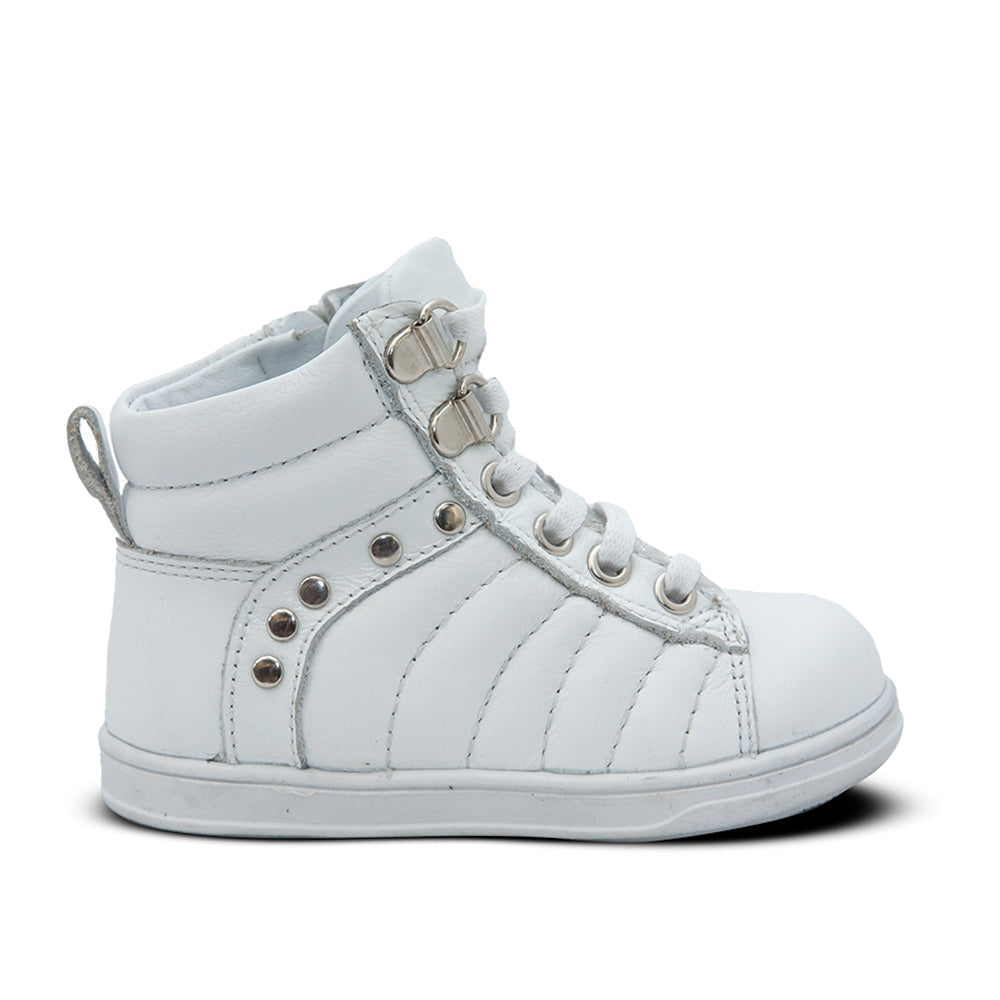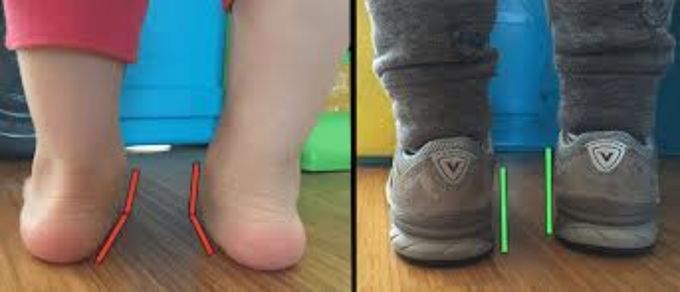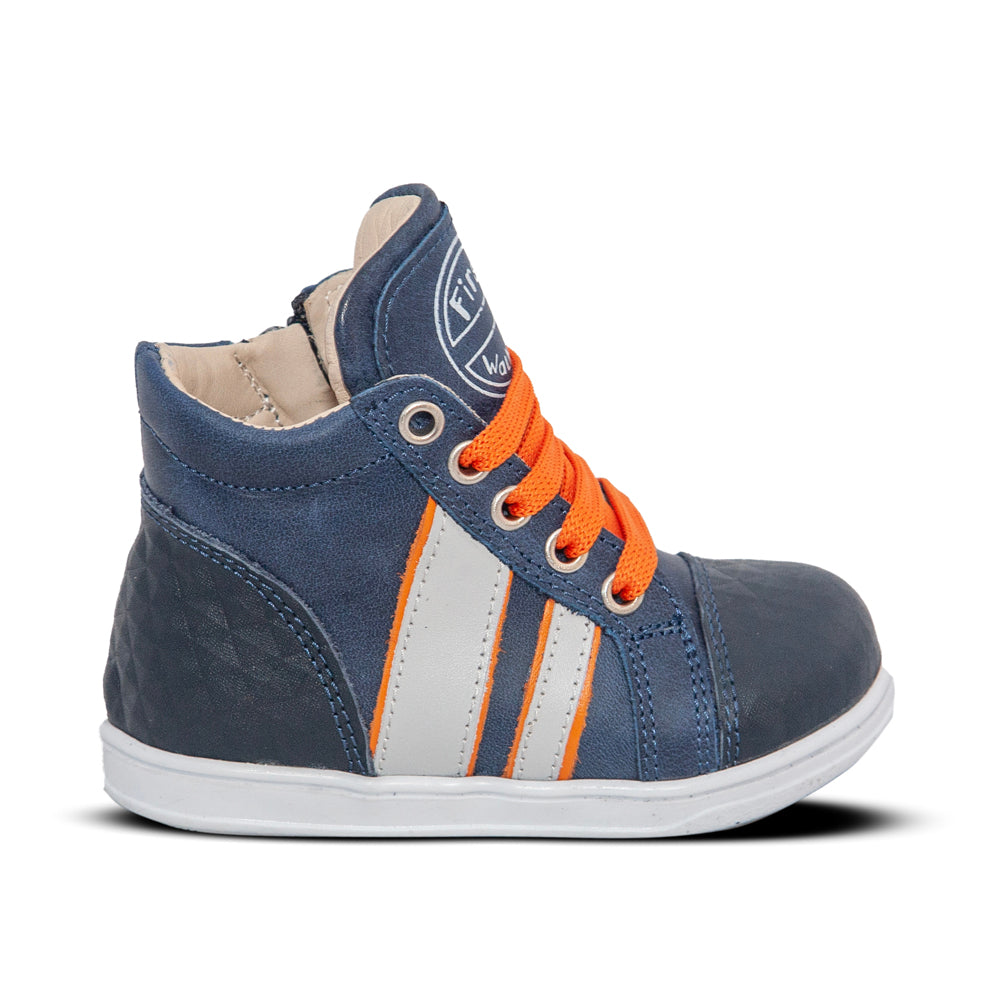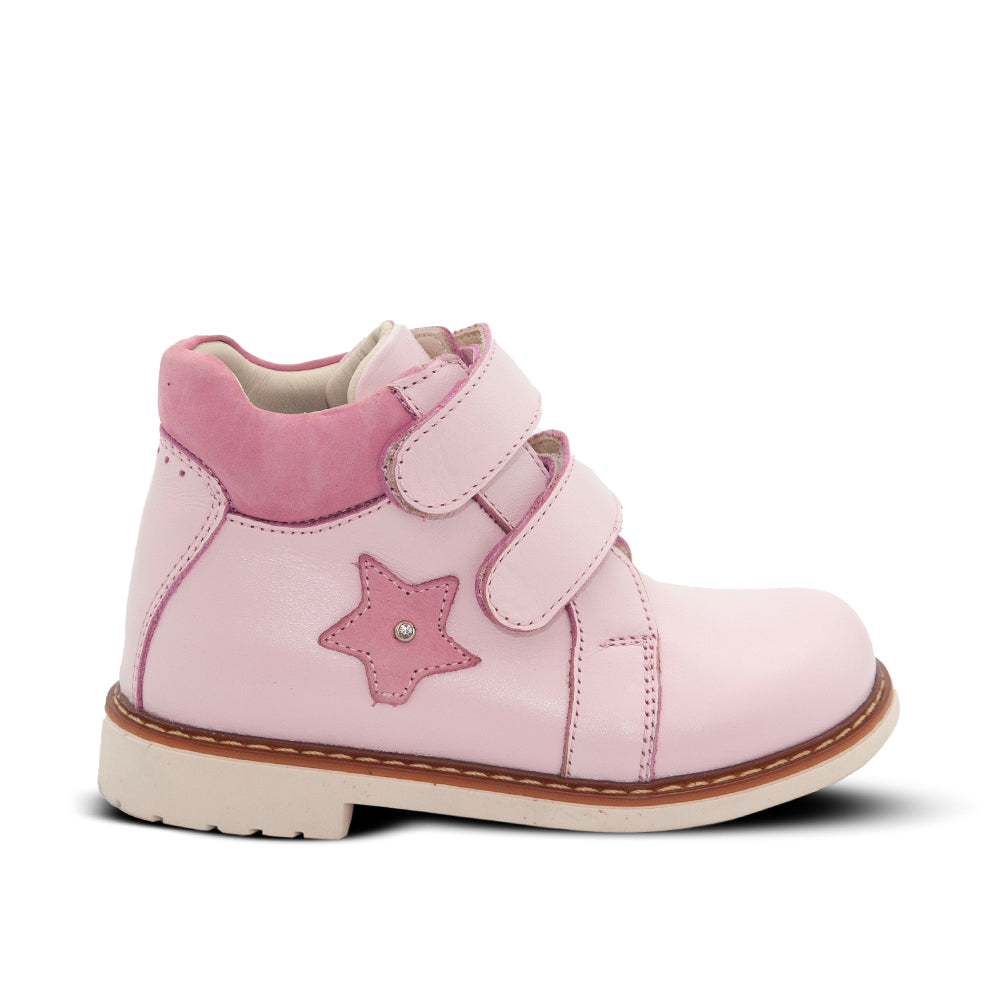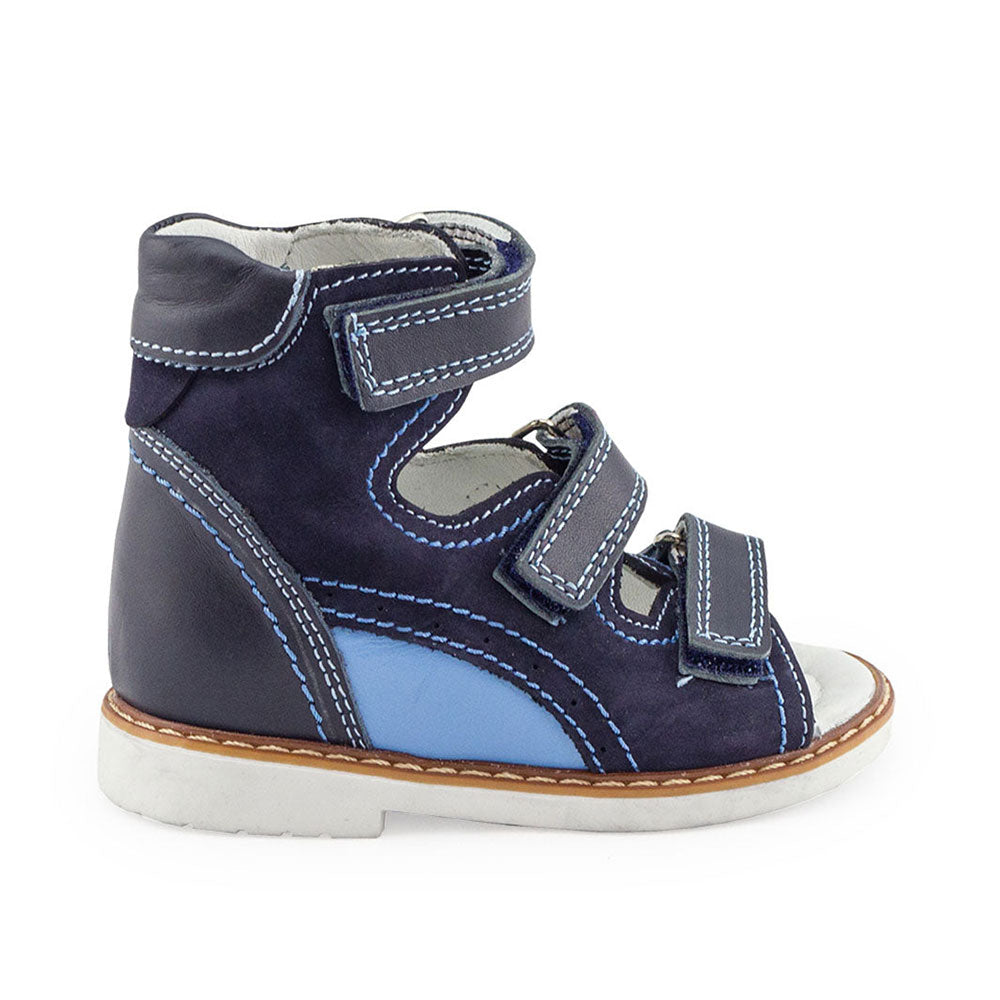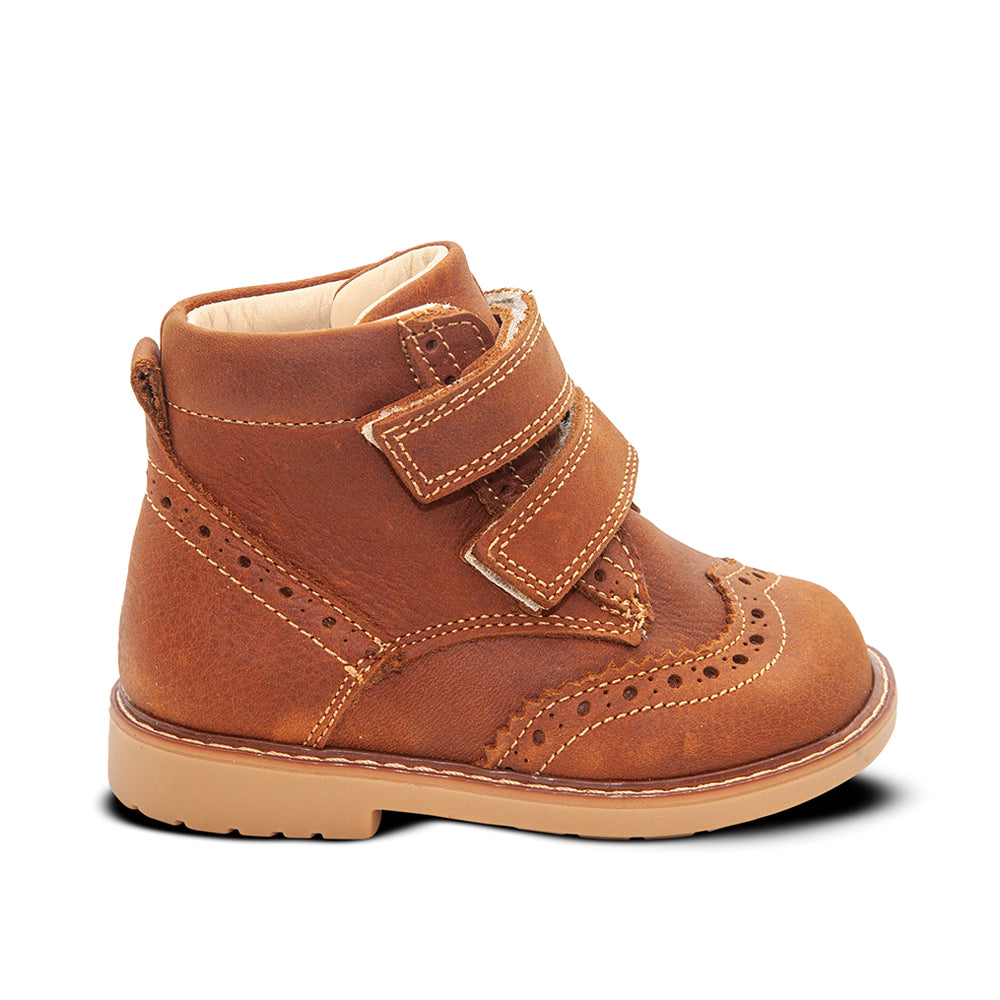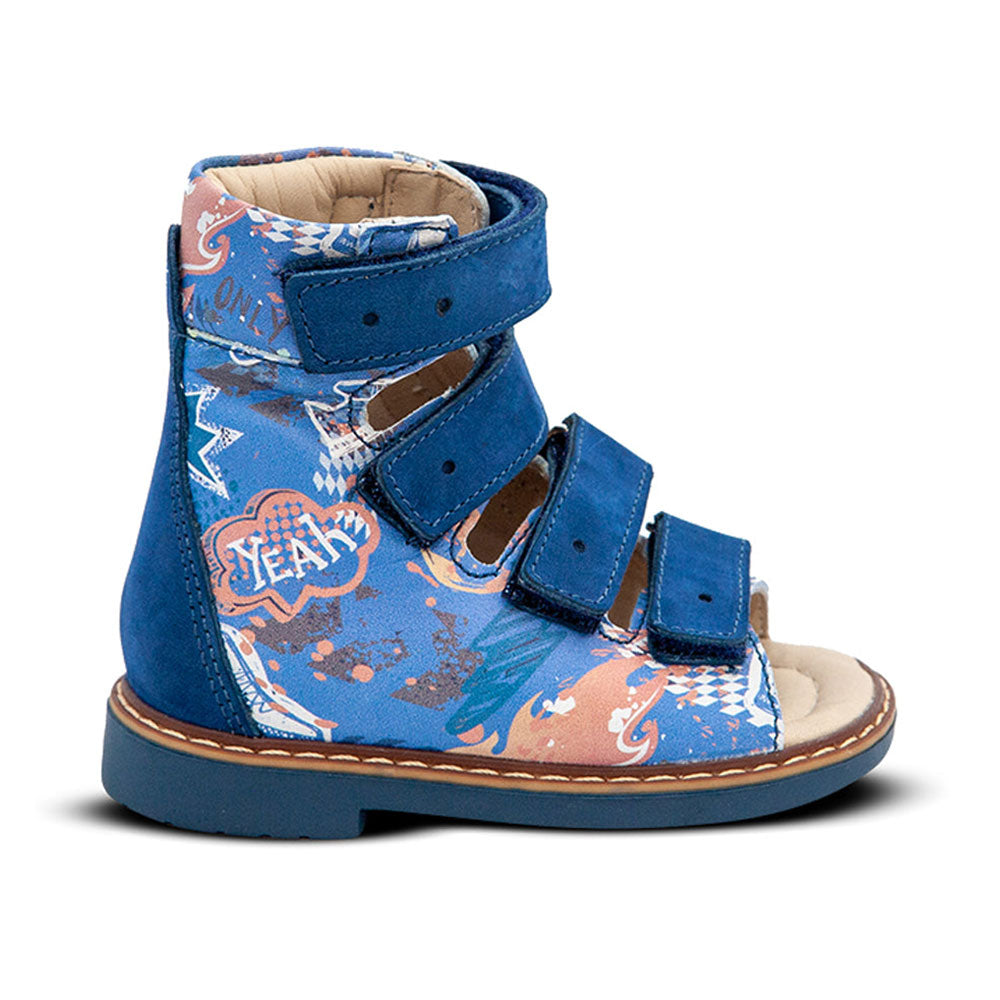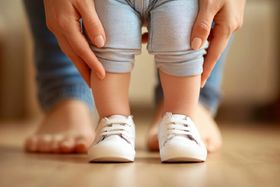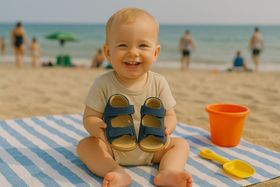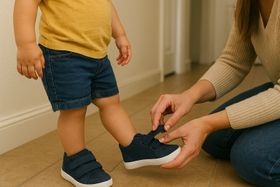Where & How to Buy Orthopedic Shoes for Toddlers: Ultimate Guide
Finding specialized shoes for your toddler's developing feet shouldn't be overwhelming. This guide simplifies your search for the perfect orthopedic footwear.
Updated July 21, 2025
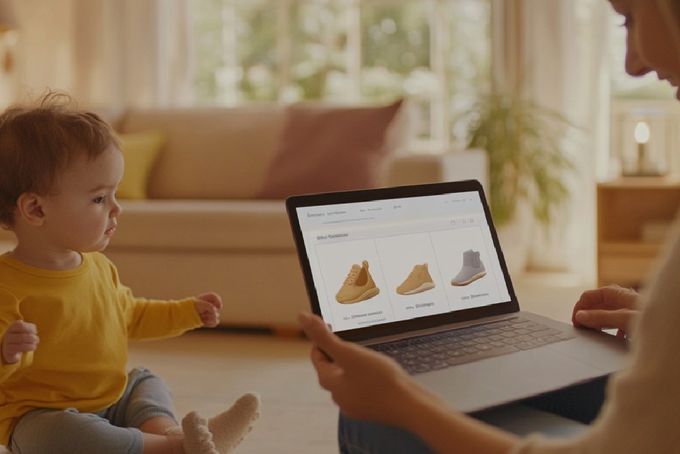
Each unsteady step your toddler takes represents critical neural pathways forming and muscles developing. Yet, for many children, standard footwear falls short. While searching for shoes, you might find yourself lost between medical recommendations and retail reality.
The journey typically begins with a pediatrician's casual comment about your child's gait or a nagging parental instinct that something isn't quite right. Then comes the research—hours spent deciphering terms like "supination" and "pronation" while questioning whether the price justifies the features.
This guide cuts through both the medical jargon and retail noise. We'll explore reliable specialty retailers both online and brick-and-mortar.
» Browse a collection of orthopedic toddler shoes (12-24 months)
What Are Orthopedic Shoes?
Orthopedic shoes are special shoes designed to support a child’s feet as they grow. They help with foot alignment, provide extra comfort, and prevent common foot problems.
These shoes often have a wide toe area, sturdy heels, and removable insoles to ensure proper foot development. Orthopedic shoes can help a toddler with issues like flat feet or walking discomfort by providing the right support.
Wearing the right shoes can make a big difference in how a child walks and plays. Orthopedic shoes help distribute weight evenly, making movement easier and reducing strain on little feet.
They’re especially useful for kids with medical conditions like flat feet or weak ankles. Choosing orthopedic shoes can keep your child’s feet healthy and comfortable as they grow.
» Check our list of the best orthopedic shoes for toddlers
5 Signs Your Toddler Might Need Orthopedic Shoes
There are many signs your toddler would need orthopedic shoes:
1. Abnormal Gait Patterns:
In these cases, your little one walks with a wide gait, waddles walks on their toes, or limps. If you notice such issues, you can consult your podiatrist about investing in orthopedic shoes. They will improve their gait and posture while preventing joint, hip, and knee deformities.
2. Pain While Walking:
If your kid's gait worsens or if they feel pain when they have shoes on, it can be a sign that the shoes don't fit. They may also reject putting on the shoe. In that case, you should consider buying orthopedic shoes.
3. Delayed Milestones:
Is your toddler not walking independently as often as they should? Are they struggling with running or climbing stairs? They might be wearing ill-fitting shoes. You should look into orthopedic shoes to help them catch up.
But before you do that, you can just consult your podiatrist to find out any foot conditions.
» Is your kid pulling up to stand? They might benefit baby cruising shoes
4. Shoe Wear & Skin Conditions
You might notice uneven wear and tear on your toddler's shoes due to an improper fit. Poor materials used to make the shoe might also cause warts, blisters, or rashes on their feet.
5. Foot Deformities
5.1. Flat Feet
Flat feet are caused when the medial arch of the foot collapses and the foot over-pronates (see figure) when the toddler stands or bears weight on their feet. Almost all children under 18 months have flat feet [1].
5.2. Knock Knees
This condition can be normal in children between the ages of 3 and 4 when the knees are turned inwards, and the angle of the knee is abnormally large (genu valgum).
5.3. Bow Legs
When the knees are turned outwards, it's normal in children up to 2 years of age [2]. But if it persists after that, it requires non-invasive solutions like orthotics or orthopedic shoes.
» Discover if your baby needs shoes while learning to walk
Where to Buy Orthopedic Shoes for Your Toddler
Buying Orthopedic Toddler Shoes Online
Many online retailers like First Walkers specialize in orthopedic children's footwear. They are a great option if you're looking for a wide selection of orthopedic and orthotic-friendly shoes.
If you have already bought orthopedic shoes for your toddler from an online retailer, doing so again will be hassle-free. All you need is to size your little one's feet accurately so you don't buy shoes that are too tight or loose.
Here's the most effective way to measure your toddler's shoe size:
- Take two sheets of A4-size paper (one for each foot)
- Place it on a hard, flat surface and ask your kid to place one foot on the paper in a standing position. If your little one can't stand or has difficulty standing independently, you can ask a third person to help them or take the measurement with your child lying on their back.
- Trace the outline of the foot, holding a pen or pencil vertically to get as close to the outer edge of the foot as possible.
- Next, measure the length of the foot from the tip of the big toe to the mid-point of the heel in cm.
- Measure the width of the foot across the widest part of the tracing.
- Repeat for the other foot and note the measurements.
- Compare the measurements to online size charts to determine which size of orthopedic shoe is the best for your toddler.
Buying Orthopedic Toddler Shoes Locally
You can take your little one to a podiatrist or physical therapist for an evaluation. They can recommend suppliers near you that offer orthopedic shoes specific to your child's needs.
It's also a better option if you want to go in person to make sure your kid's shoes fit well. Suppliers usually have an expert at hand to help you through the fitting and recommend adjustments.
In my experience, orthopedic shoes are best when customized for toddlers' feet. Pushy agents at in-person stores will try to sell the latest or most expensive designs with features your child may not really need.
In-person stores also have limited selections and stock. The supplier may need to make one for you, which can take anywhere from a week to several weeks.
Note: Buying orthopedic shoes doesn't mean your child’s feet require support 24/7. You should also encourage walking, standing, and climbing while they're barefoot.
It improves their foot sensations, strengthens their muscles, and develops their arch better than wearing shoes.
5 Signs You Picked the Right Shoe Size
- Your little one accepts shoe-wearing (when he previously was fussy or complained of pain)
- Their walking pattern shows some improvement (e.g., they walk with their feet more parallel to each other).
- While wearing the shoes, they can walk on various surfaces (pavement, gravel, sand, etc.) without issues.
- If your toddler has a foot deformity, you should notice a correction after they wear orthopedic shoes.
Note: Orthopedic shoes are only passive support. They can't replace the benefits that physical activity, stretching, and physical therapy have on foot development. If your doctor recommends PT in addition to ortho shoes, it should be a priority.
5 Things to Look for In Orthopedic Toddler Shoes
Here are several features you need to prioritize when buying your toddler's shoes online or in an in-person shop:
1. Comfort
The orthopedic shoe needs to fit properly, with enough room for the toes to wiggle and enough room for the heel to fit snugly (check the buying shoes online section for sizing). The heel shouldn't slip forward when your little one walks, and it also shouldn't lose contact when they stand on their toes.
This ensures your toddler's feet and toes are not cramped and have room to breathe. It also decreases the chances of developing blisters, rashes, and warts and promotes movement and play.
» Check out the best walking shoes for 1-year-olds
2. Correction
The shoe should be designed to correct misalignments and deformities. It must also properly align the foot and distribute the weight evenly among the joints, helping your kid stay in top form while actively playing.
3. Material
The body of the shoe (the part of the shoe except the insole and outsole) should be made of natural and breathable materials like cloth or mesh. The insole should be made of comfortable and flexible material like silicon. Avoid pairs with heavy materials like cork and hard rubber [3].
» Find out why your baby's feet might be stinky
4. Support Provided
The shoe should have a proper arch and ankle support. Almost all toddlers under 18 months of age have flat feet (when barefoot), and it can take up to 6 years for the arch to develop. First Walkers collection offers various sneakers, boots, and sandals with arch support, perfect for toddlers.
5. Grip (Outer Sole)
The outer sole should grip on even smooth surfaces. This way, your kid can walk easily without slipping or falling when exploring. They will breeze through different environments safely, like a park, a grassy lawn, a rocky beach, or a smooth floor in the mall.
Note: It can take your little one anywhere from a week to a month to break into their shoes, depending on their activity level and the sensitivity of their skin.
Always encourage them to wear shoes during short trips near home before you have them wear them on a long trip or excursion to avoid blisters and rashes.
» Find out when should your kid start wearing soft-soled shoes
Typical Price Range for Kid's Orthopedic Shoes
The typical price range for orthopedic shoes: Orthopedic shoes are more expensive than normal shoes due to their specialized design and biomechanical benefits.
The typical prices in online orthopedic shoe retailers are:
- USA - $80 to $125.
- Europe - €70 to €110
- Australia - AUD 110 to AUD 180
Note: Some high-end models may exceed the price range.
Factors affecting cost difference
- Materials and Design: Orthopedic shoes are made using higher-quality materials to craft the arch support, insoles, and straps to address specific foot problems and misalignments.
- Research and Development: Crafting orthopedic shoes requires extensive research and development costs, as well as collaboration with experts like podiatrists, doctors, and physical therapists, which can drive costs.
- Lower Production Volume: The demand for orthopedic footwear is smaller compared to standard shoes, resulting in reduced supply and higher per-unit costs.
How to Find the Best Deal On Orthopedic Shoes
Subscription services offer a variety of sizes and include footwear accessories, saving you time by eliminating the need to shop in-store or online. But, they may not be ideal for very young children who outgrow sizes quickly, as a fixed style may not meet their changing needs.
Retailers often offer seasonal discounts on high-quality shoes. Many provide rewards or loyalty points that can be redeemed on future purchases. Additionally, online stores frequently update their “on-sale” sections, so be sure to check regularly for the best deals.
Taking the Right Steps Forward
Remember that orthopedic footwear is highly individualized. What works brilliantly for one child may not be ideal for another. Trust your observations, talk to your podiatrist, and be willing to adjust your approach as your child grows and develops.
When exploring options, consider brands like First Walkers that specialize in making supportive and well-designed orthopedic shoes for toddlers. Also, look for free express delivery options to make the process more convenient.
Most importantly, balance professional advice with your parental insight. You observe your child daily and notice the subtle changes in their movement, comfort, and confidence that even specialists might miss during brief appointments.
References:
- B. Grueger, S. C. De Pédiatrie, and C. De La Pédiatrie Communautaire, “Footwear in children,” Paediatrics & Child Health, vol. 14, no. 2, p. 121, Feb. 2009, doi: 10.1093/pch/14.2.121. Available: https://pmc.ncbi.nlm.nih.gov/articles/PMC2661351/?
- “Bow-legs and knock knees factsheet,” The Sydney Children’s Hospitals Network. Available: https://www.schn.health.nsw.gov.au/bow-legs-and-knock-knees-factsheet
- Website designed and developed by Zarr - https://www.zarr.com, “Children’s Foot Health: A guide for parents,” IOP. Available: https://www.iop-uk.org/footcare/childrens-foot-health-a-guide-for-parents.aspx
Disclaimer: First Walkers' information is intended for educational and informational purposes related to toddler footwear and feet. We encourage you to consider individual circumstances and consult qualified orthopedists about specific conditions.

